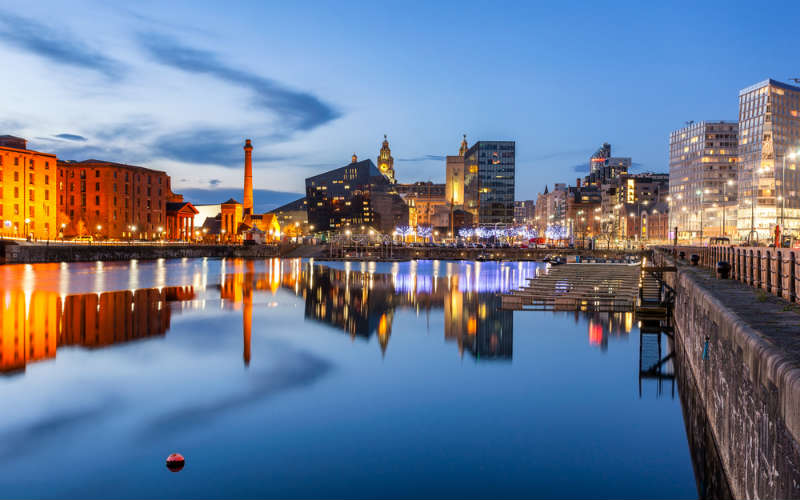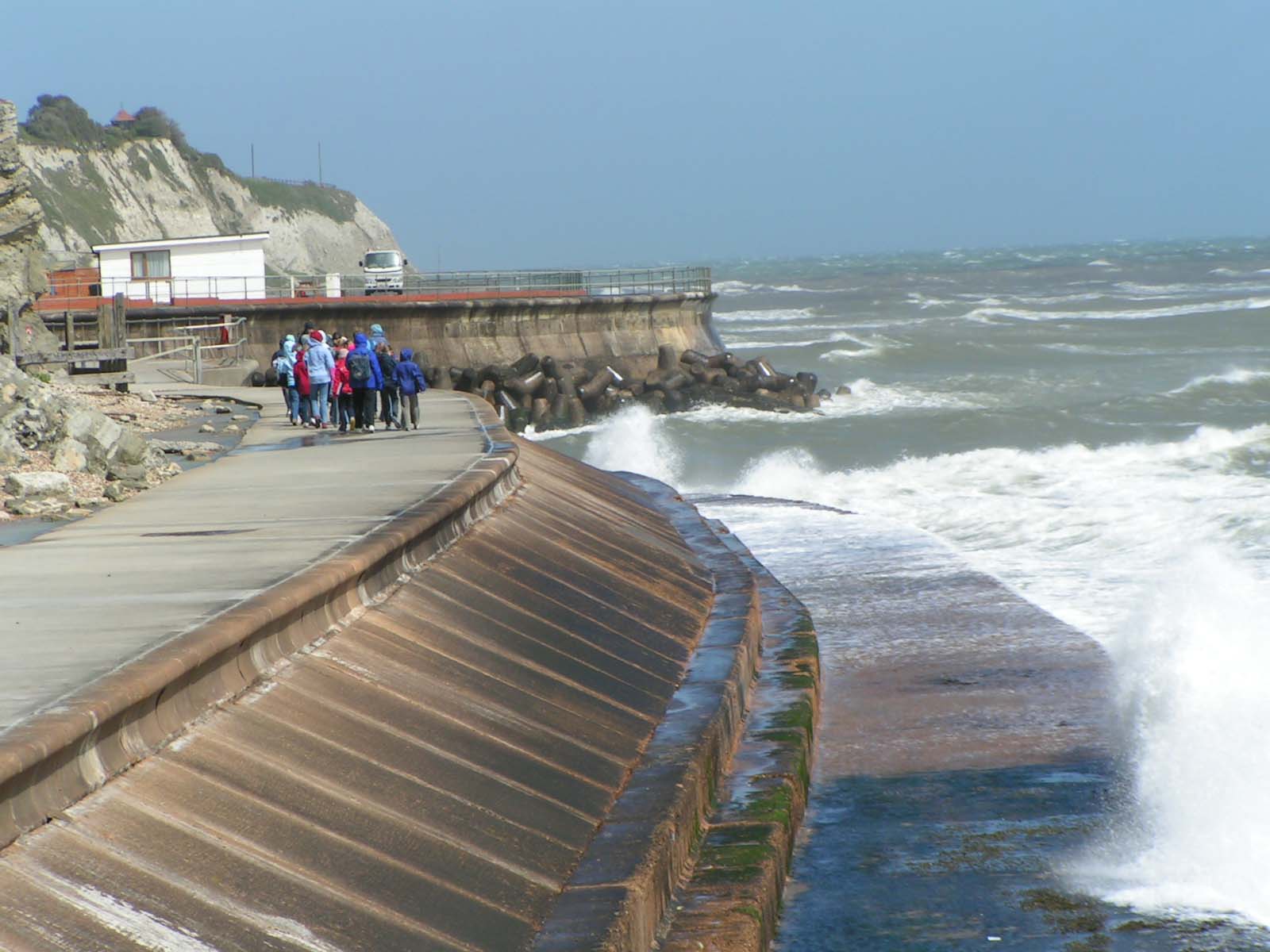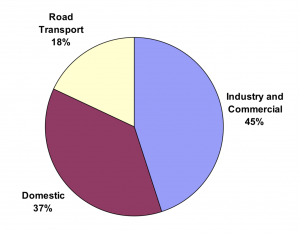Section #4, A Tale of Two Frogs
This video is all about section four of our transect line. This transect covers the interstate and how it divides the city in half for pedestrians. This video talks about some of the struggles which are faced by pedestrians and people who live and commute in the area. Not only does the interstate divide the city in half, but it also causes other environmental issues that residents have to deal with. Issues of trash and unsafe environments are issues that are closely tied with this section of interstate. This video also asks what do we do to solve these issues while still keeping the city traversable by car.
Liverpool, England

Once a thriving port city, the introduction of containerized shipping to Liverpool crashed the local economy which was heavily based in shipping. This crash in the early 1970s drastically cut the population from around one million to under 500,000, leaving massive sections of the city desolate. There didn’t seem to be a silver lining for the city until early in the 90’s when the economy slowly began to pick up again. Although the city has had nearly three decades to improve, it is still facing issues of low population and subpar living standards.
Throughout the course of the last three decades, Liverpool has attempted multiple times to bring the city back to it’s booming past. One solution to this problem came in the form of environmental reform. In 2009, Liverpool issued a new strategy to both help the city attract more people to live there and become more environmentally friendly. Alongside the environmental aspects, this reform also aimed to help update the city and improve the standard living for it’s residents.
Rising Sea Levels
 Although Liverpool will only be slightly affected by rising sea levels, a great number of households in England (520,000 Properties) are at risk from coastal flooding and erosion. While the sea level will rise equally around England, the areas most at risk are those which are heavily developed. This is not just an issue of
Although Liverpool will only be slightly affected by rising sea levels, a great number of households in England (520,000 Properties) are at risk from coastal flooding and erosion. While the sea level will rise equally around England, the areas most at risk are those which are heavily developed. This is not just an issue of
.jpg?itok=zsqUHxlJ) saving coastlines; it is also an issue of saving communities. In one town of Happisburgh, entire blocks are vulnerable to cliffside erosion. One block of trailer homes were forcibly relocated in 2018 due to encroaching coastline erosion. One probable solution to this is to reinforce the cliffs which support these developed areas, but this solution can be expensive and remove important habitats.
saving coastlines; it is also an issue of saving communities. In one town of Happisburgh, entire blocks are vulnerable to cliffside erosion. One block of trailer homes were forcibly relocated in 2018 due to encroaching coastline erosion. One probable solution to this is to reinforce the cliffs which support these developed areas, but this solution can be expensive and remove important habitats.
An example of eroding England cliff sides

An example of a sea wall, one probable solution to sea-level rise.
CO2 Emission in Liverpool
The Liverpool city council calculated that their city emits about 2.8 million tons of carbon emissions each year. Their goal is to reduce this number by thirty-five percent by the year 2024 and by eighty percent by the year 2050. One way which the city plans to reduce their carbon footprint is by creating carbon-neutral homes. Carbon neutral homes are homes which produce no carbon emissions and Liverpool planned to make all new homes carbon neutral by 2016.
A driving force behind this change was air pollution in Liverpool. A report in May of 2018 found that Liverpool was one of the most polluted cities in the United Kingdom. This study found that the majority of Liverpool has air pollution levels at or above WHO air quality guidelines. This is directly related to a high number of deaths in Liverpool which are because of respiratory disease.
Despite the poor levels of air pollution, there is a silver lining for Liverpool. the same article which reported high levels of air pollution also reported that there are more steps actively being taken to mitigate the high levels of air pollution. A proposed ban would start barring busses and cab which run on diesel fuel from entering into the city. The policymakers stated that they wanted to: “explore the introduction of alternative fuels”.

A chart showing Liverpool carbon emission by sector

A chart from the 2009 plan showing carbon emission levels
Liverpool Youth
![]() The current plan of action for Liverpool has no formal inclusion of youth, but it does not mean that Liverpool has forgotten about them. In a recent city council hearing, the importance of young generations was brought to the table. “Our young people have the most to lose. For there to be intergenerational justice, it is vital that we take the radical action needed to ensure that we leave the planet in a better condition than we received it.” This is especially important because Liverpool has a population that is younger than average with 42% of the 550,000 residents being under thirty.
The current plan of action for Liverpool has no formal inclusion of youth, but it does not mean that Liverpool has forgotten about them. In a recent city council hearing, the importance of young generations was brought to the table. “Our young people have the most to lose. For there to be intergenerational justice, it is vital that we take the radical action needed to ensure that we leave the planet in a better condition than we received it.” This is especially important because Liverpool has a population that is younger than average with 42% of the 550,000 residents being under thirty.
Fortunately, there is a glimmer of hope for Liverpool youth. In March 2019, the Liverpool city council agreed to become a UNICEF child-friendly city. This three-to-five-year plan would have Liverpool officials working closely with UNICEF representatives to help gear Liverpool policy towards the protection and care of those under 18. The initiative is currently in the “discovery” phase, which is where Liverpool representatives work with youth to understand what Children see as needs or where they feel unsafe. It is exciting to see what comes of this phase in the near future.
Substandard Neighborhood Design
 Something which is vital to neighborhood health is often the most overlooked. The neighborhood design of Liverpool is horrendous and is not conducive to a healthy community. As pictured in the figure-ground drawing below, much of this Liverpool neighborhood consists of long rows of housing with very few cross streets or alleyways. If a person wanted to go to a house one street over from theirs, the walk is significantly prolonged when compared to a neighborhood with many cross streets.
Something which is vital to neighborhood health is often the most overlooked. The neighborhood design of Liverpool is horrendous and is not conducive to a healthy community. As pictured in the figure-ground drawing below, much of this Liverpool neighborhood consists of long rows of housing with very few cross streets or alleyways. If a person wanted to go to a house one street over from theirs, the walk is significantly prolonged when compared to a neighborhood with many cross streets.

A figure-ground drawing of a typical Liverpool residential neighborhood.
Sources
https://liverpool.gov.uk/media/9142/liverpool_climate_change_implementation_programme_sept2009.pdf
http://worldpopulationreview.com/world-cities/liverpool-population/
https://www.liverpoolecho.co.uk/news/liverpool-news/top-ten-issues-merseyside-residents-14994173
https://www.theguardian.com/cities/2017/apr/27/capital-itself-liverpool-future-mayoral-election
https://www.liverpoolecho.co.uk/news/liverpool-news/liverpool-one-most-polluted-cities-14610314
https://www.theguardian.com/environment/2018/oct/26/rising-sea-levels-will-claim-homes-around-english-coast-report-warns
liverpool-waterfront-night.jpg
Liverpool, England

Relatively new among the Child-Friendly Cities Initiative, Liverpool committed itself in March of 2019 to become a child-friendly city. Over fifty local schools took part in the event which will lead to a three to a five-year partnership with city officials. City officials say that the program will focus primarily on ensuring youth rights are fairly represented in policies, programs, and budgets laid out by the city.
The beginning of this journey to become child-friendly starts with what the city calls a “discovery phase”. This is a phase where city policymakers actively work with youth and young adults to understand what is important to their well-being as well as their personal development. The end goals of this phase are to identify three “badges” or areas which policymakers will prioritize. Examples of what areas might be prioritized are safety, education, and future employment.
Throughout this process, a representative from UNICEF’s Child-Friendly City Initiative will be performing reports on Liverpool’s progress. The representatives will be actively checking in to measure positive change within Liverpool’s youth while using testimonials from city youth to ensure this change is tangible. If Liverpool passes its checkups with UNICEF, “it will be internationally recognized as a UNICEF Child-Friendly City, joining cities and communities in 40 countries which are taking part in this global program”.
Positive Signs
Over July of 2019, the child-friendly initiative of Liverpool paired with the local charity Positive About Play. The goal of Positive About Play is to give local children more opportunities to be active and provide meals for children who wouldn’t be otherwise fed. Because the charity works so closely with youth in Liverpool, policymakers have teamed with the organization to be able to call Liverpool child-friendly. There are currently over fifty activities planned by Positive about play and the organization continues to plan more.
Takeaway Lessons
As compared to other cities taking on the child-friendly initiative, Liverpool is especially new to the game. Many cities which have taken part in this program have come up with physical changes which their cities have installed or implemented. Liverpool’s program is far too new for anything physical to be implemented, but it’s important to know where these programs start at.
New Orleans is in a very similar boat as Liverpool when it comes to this initiative. Liverpool currently has no grand plans or schemes which turn the city around in no time flat. Ture change which will be long-lasting and influential always has to shoot for long term goals as opposed to short bursts of effort. For the change we seek in New Orleans to have a long-lasting effect, starting small by truly understanding the community’s needs to where to start.
Sources:
https://www.lcvs.org.uk/give/positive-about-play/
https://liverpoolexpress.co.uk/liverpool-takes-step-closer-to-becoming-unicef-child-friendly-city/
https://www.liverpoolecho.co.uk/in-your-area/thousands-liverpool-children-positive-play-16137164
https://www.unicef.org.uk/press-releases/liverpool-kicks-off-bid-to-become-unicef-child-friendly-city/